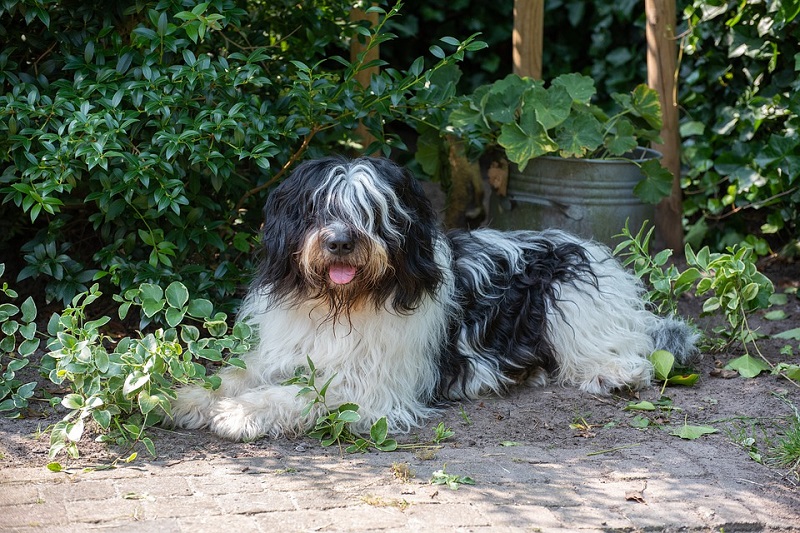Pug Lab Mix (Pugador): Info, Pictures, Traits, Facts & Puppies

Updated on

| Height: | 15–17 inches |
| Weight: | 25–45 pounds |
| Lifespan: | 10–14 years |
| Colors: | Black, chocolate, yellow, apricot, fawn, silver |
| Suitable for: | Active families, those looking for a low-shedding dog |
| Temperament: | Loyal, affectionate, outgoing, mischievous |
The idea of the mix of a Pug and a Labrador Retriever has to make you smile. It seems so improbable yet so right. The standout features of both parents are their eagerness to please and their outgoing nature. The mix is a winner on so many scores. The Pug is a natural companion animal. The Lab is a canine BFF that we all adore. Can you walk past this pup and not ask the owner if you can pet him?
The parent breeds differ in their histories. The Pug is an ancient dog with a history that goes back thousands of years. It took a while before the Western World discovered this pup. On the other hand, the Labrador goes back to the early 1800s.
It’s unclear when the first Pugador was bred, and they’re not as common as other designer breeds. None of the hybrid clubs recognize this mix, which is worth noting concerning the availability and standards you’ll likely encounter. The disparity of the sizes of the parent breeds introduces a lot of variability, too.
 Pug Lab Mix (Pugador) Puppies
Pug Lab Mix (Pugador) Puppies
The primary concerns are health-related with both parent breeds. We suggest caution when looking for a Pugador. At this point, the standards are a bit loose, at least until he gains recognition with the various organizations. We suggest researching the traits of both the Pug and Labrador before buying a puppy. While they’re cute enough, they also have their challenges.
The Pug brings a whole slate of issues with his flat face. We understand how people can fall in love with this pup. His antics and adorable head-tilting behavior win many fans of the breed. The Labrador is all-American, even if his origins stretch back to Newfoundland. Is it any wonder that he is one of the most popular breeds, according to the American Kennel Club (AKC)?
Now, let’s flip the coin and discuss the other things you need to know. The Pug cannot tolerate being alone. He loves people that much. He also has a high propensity for weight gain. The Lab has a waterproof, oily coat that some people may find offensive because of its odor, especially when it gets wet. He is a barker with a stronger prey drive than the Pug.
3 Little-Known Facts About the Pug Lab Mix (Pugador)
1. The Labrador Is More Than a Bird Dog.
Many people associate the Labrador Retriever with a gun dog accompanying waterfowl hunters. He excels at the role, but he got his start with a different type of water animal, namely, fish. Cod anglers depended on this pup to help them with their job.
2. The Pug Started Out Living the Good Life.
The Pug is the epitome of a companion animal. What else can you say about a canine that emperors pampered and warriors guarded? He continues this coveted standing, albeit with ordinary folks like us, instead of royalty.
3. The Pug Has Fans in High Places.
Some may say the Pug is a dog only a mother could love. Just tell that to Hugh Laurie, Billy Joel, and James Taylor, who have all fallen under the spell of this adorable pup.

Temperament & Intelligence of the Pug Lab Mix (Pugador) 🧠
The temperament of the Pugador is a winning combination. It brings together the comical nature of the Pug with the friendliness of the Lab. The intelligence of the Retriever is the star attraction when it comes to trainability. He is a smart dog that is eager to please. Both parent breeds are quite affectionate, even with strangers. Therefore, the Pugador is not the best choice for a watchdog.
The Pugador is an agreeable dog on most fronts. However, he is sensitive to harsh reprimands, which he gets from both parents. It’s not surprising, either, given their close relationship with humans through the years. Positive reinforcement is the key to building a strong bond with your pup.
Are These Dogs Good for Families? 🏡
The Pugador will make a wonderful family pet. He adores people and is kid-friendly, too. He also has the energy to keep up with them. We suggest supervising playtime with your pet if you have small children. It’s essential if your pup takes after the Lab more than the Pug in size. The Retriever is a muscular dog that may not realize his strength around the little ones.
Does This Breed Get Along with Other Pets? 🐶 😽
The histories of both the parent breeds make the Pugador adaptable to households with other pets. We recommend early socialization to ensure a smooth transition into your home. Neither the Lab nor the Pug has an overly strong prey drive. You can correct this behavior if your pup chases the family cat so it doesn’t become a habit.
 Things to Know When Owning a Pug Lab Mix (Pugador):
Things to Know When Owning a Pug Lab Mix (Pugador):
If the Pugador sounds like a possible fit for your home, let’s delve deeper into routine care issues. Both parent breeds have their quirks and varying susceptibilities to chronic health conditions. Knowing what you can expect will go a long way toward nipping any potential problems in the bud.
Food & Diet Requirements 🦴
The size difference between the Pug and the Labrador is marked. Whether you feed your pup a diet for a medium or large dog will depend on the dominant parent. It’s essential to give your pet food that is appropriate for his size and life stage. Puppy and adult foods differ in their nutritional density. We emphasize this point because of the propensity for weight gain in the Pugador.
It’s imperative to monitor your Pug Lab Mix’s body condition and make adjustments accordingly. You should be able to see a distinct waistline when looking down at your pup. It’s easy to see because of his short coat. Remember that the instructions on the pet food bag are only guidelines and not rules. We also suggest reserving treats as training aids to help keep his weight in check.
You can feed your Pugador puppy three or four times a day. Once he reaches adulthood, cut it down to two meals, evenly spaced throughout the day. Doing so may help prevent him from gulping down his food too rapidly. The essential factor to remember is that both parent breeds are highly food-motivated.
Exercise 🐕
The Lab in your Pugador is an active dog that wants to run—and swim! However, if he has the flat face of a Pug, we recommend limiting his time in the water because of possible respiratory issues. The same caution applies to working your Lab-dominant pup hard. Unfortunately, the Pug Lab Mix is susceptible to a condition called exercise-induced collapse if the play gets too intense.
Training 🦮
The Pugador is easy to train, especially if he inherits the Lab’s intelligence. We suggest starting from day one. The Retriever has a higher propensity for nipping that you’ll need to control before it gets out of hand. Offer him a toy when he starts to bite. The key to harnessing his eagerness to learn is regular, consistent training. He’s smart enough to catch on quickly.
Grooming ✂️
Shedding is a factor no matter which parent breed is dominant, which requires regular brushing to keep the hair under control. If your Pugador has the Lab’s oily coat, an occasional bath can help keep the odor in check. Just don’t do it too frequently to prevent his skin from drying. Remember that the oil serves a vital purpose for this water dog.
Health and Conditions ❤️
Because of their popularity, Labs often have a greater incidence of congenital conditions because of overbreeding. Their large size is also a factor. Pugs also bring a new host of challenges because of their flat faces. It often manifests itself in various conditions, from heat stroke to respiratory disorders to eye problems.
That makes preventive vet care imperative for the Pugador. Pre-breeding health screenings can only go so far, especially since the Lab brings other unexpected factors into the mix, such as exercise-induced collapse and obesity. The latter is also a risk for other health issues, such as diabetes.
- Allergies
- Ear infections
- Cataracts
- Obesity
- Hip dysplasia
- Elbow dysplasia
- Heart issues
- Exercise-induced collapse (EIC)
 Male vs Female Pugadors: What’re the Differences?
Male vs Female Pugadors: What’re the Differences?
If the Lab is the dominant parent breed, you’ll see a greater difference between male and female Pugadors if that’s a factor in your decision. Otherwise, you’ll find that either one will make a suitable pet. If you’re not going to breed your Pugador, you should discuss neutering or spaying your pup with your vet. Keeping them intact has health risks and can also increase his chances of obesity.
 Final Thoughts
Final Thoughts
The Pugador isn’t the most common hybrid, but he certainly is one worth a look. His friendliness and outgoing nature are sure to make him a hit in the neighborhood. Early socialization will improve his manners for getting along with the other dogs on the block, too. The primary concern with owning this pup is maintaining a healthy weight.
Regular exercise and frequent walks are vital for the Pug Lab mix to be healthy. It’s also an excellent time to reinforce his training and social skills. With proper vet care and a high-quality diet, you’ll enjoy years with this delightful canine.
Featured Image Credit: Left – skeeze, Pixabay; Right – Mylene2401, Pixabay
 Pug Lab Mix (Pugador) Puppies
Pug Lab Mix (Pugador) Puppies

 Things to Know When Owning a Pug Lab Mix (Pugador):
Things to Know When Owning a Pug Lab Mix (Pugador): Male vs Female Pugadors: What’re the Differences?
Male vs Female Pugadors: What’re the Differences?








